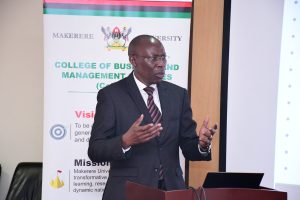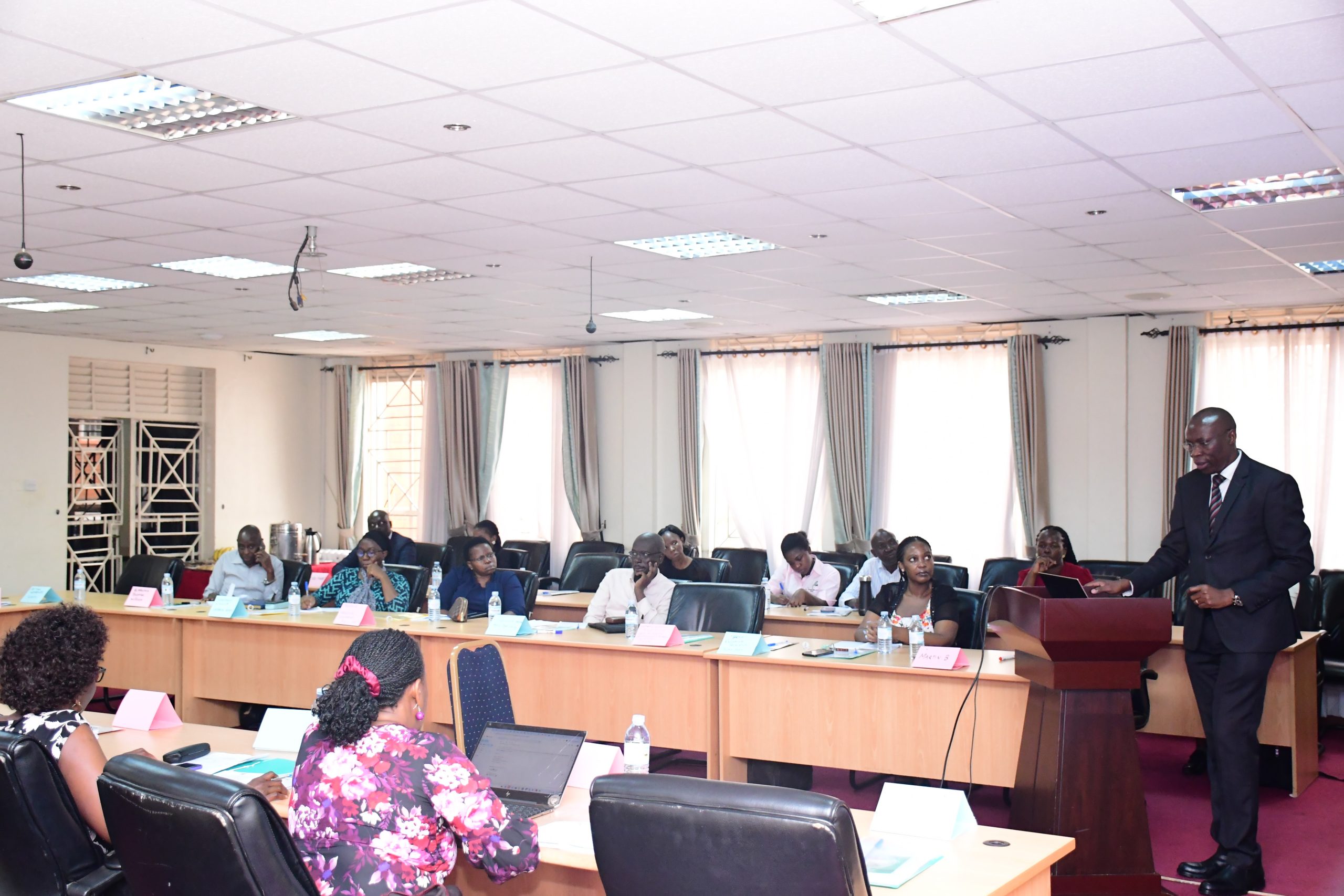On the second day of the Strategic Leadership Training (7th–11th July 2025), the session was facilitated by Dr. Seperia B. Wanyama, a Senior Lecturer and a renowned Human Resource Management expert based in the School of Business under the College of Business and Management Sciences (CoBAMS) at Makerere University. Dr. Wanyama guided the participants through key insights on leadership and people management in organizations.

Beginning his presentation, Dr. Wanyama, emphasized the significance of effectively leading people within an organization. He explained how this leads to the setting and articulation of strategic goals and vision, driving high organizational performance, managing team dynamics, and motivating individuals towards desired behaviors.
“People are the most valuable resource in any organization,” Dr. Wanyama stated. “They bring skills, talents, and attitudes that directly impact the productivity, quality, and profitability of an organization,” he added.
He stated that Leadership is key in sparking change, fostering innovation, and promoting continuous improvement within organizations. He provided participants with insights on how leaders can guide their teams towards high performance, manage organizational change, and inspire continuous innovation.

During the session, Dr. Wanyama highlighted that self-awareness, empathy, and adaptability are the cornerstones of great leadership. He guided the participants to understand how to motivate teams, navigate challenges, and cultivate a collaborative, continuously improving environment.
He stressed that leadership is an ongoing evolution that fosters a culture of mentorship, inclusivity, and continuous learning. He introduced the concept of people-centered leadership, which takes into account the emotional and personal needs of individuals. He outlined several leadership styles, including:
- Democratic Leadership: Decision-making by consensus, fostering collaboration but sometimes slowing progress.
- Authoritative Leadership: Effective in crisis situations, but may stifle creativity.
- Laissez-faire Leadership: Empowers team members, but risks a lack of direction if leaders are too detached.
- Situational Leadership: Adapting leadership style based on context and team needs.
- Transformational Leadership: Overhauling existing systems to drive meaningful change.
- Servant Leadership: Leaders focus on serving the team, making decisions that prioritize the welfare of the group.
He stressed the need for transformational leadership to achieve the goals and mission of the organization. “Be adaptable, communicative, and capable of holding your teams accountable,” he advised. He highlighted that motivation should not only come from financial rewards, but also from recognition, personal achievement, and career progression.
He provided valuable insights into leadership, emotional intelligence, and people management. His focus on people-centered leadership, trust, and a strategic vision for transformative change resonated deeply with university leaders.
He urged leaders to develop self-awareness, regulate their emotions, lead with empathy, and possess strong social skills as core elements of emotional intelligence to achieve effective organizational performance.
Emphasizing self-control in leadership, Dr. Wanyama highlighted that leadership is not about blaming others for mistakes, but about understanding challenges and offering support to help individuals improve.
At the conclusion of his presentation, Dr. Wanyama encouraged participants to focus not just on managing tasks, but on leading with empathy, empowering their teams, and continuously reflecting on their leadership approaches. He called upon leaders to foster a culture of transparency, inclusivity, and accountability to contribute to the long-term success of Makerere University.

